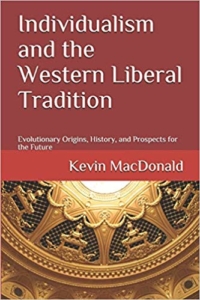Thomas Dalton on Carrying Capacity
Thomas Dalton’s current TOO article “Environment, Immigration, and Population Reduction“ reflects an intellectual movement that was for some time centered around the academic journal Population and Environment, especially when it was edited by Virginia Abernethy and later by me. The basic idea is that in the long run the human population will have to be scaled back in order to come into line with Earth’s carrying capacity.
An immediate implication of this perspective is that countries like the United States would have to institute an immigration moratorium. As things stand now, all predictions are for a massive increase in US population by 2050, almost entirely due to immigration. The figure accompanying the article, from a paper by two academics, David Pimentel of Cornell and Mario Giampiettro of the University of Rome, projects a US population of 520 million by 2050 if current increases of 1.1% per year are maintained.
Recently Lindsey Grant, another major figure in this movement, has distributed a new paper on this topic. He notes that the population restriction movement gained some traction in the 1970s but declined thereafter, and that recently the US State Department commented that “The U.S. does not endorse population ‘stabilization’ or ‘control.’” There is absolutely no discussion of reduction of legal immigration despite high levels of unemployment and wages that have been stagnant for a generation. Instead, as the LA Times reports today, the Obama administration and its Congressional allies are gearing up to legalize illegal immigrants, a policy that will hugely inflate US population as these people bring their relatives here.
Grant also points to economic realities: “The past 35 years have been a period of soaring incomes for the wealthy, stagnant hourly wages for most people, income differentials rising to levels that a humane observer would call obscene.” Rising commodity prices of the last few years are a harbinger of scarcity. Unemployment is increasing: “To keep up with population growth in those two years, we should have added about 1.2 million jobs, rather than losing nearly nine million. The “good” months are those when the job loss slows down. January was a ‘good’ month; only 22,000 jobs disappeared. What kind of recovery is that?” (For February, the loss was 36,000, a report that was greeted as encouraging by the Obama administration.) On the basis of US Labor Department statistics, he points out that the real unemployment level is 16.8 percent of the labor force, and much higher for minorities and youth.
One could say much else about the economic irrationality of current immigration policy. In attempting to explain why there are no attempts to have a population policy, he points to five reasons:
First, the national addiction to growth and the dream of rising prosperity. Second, the political fears of alienating Hispanic voters, business, and their allies by tackling immigration levels. Third, the increased assertiveness of interest groups that oppose governmental population policies on principle (such as the Vatican) or, like the feminists at Cairo, do not want population policy advocates diverting attention from their priorities, or who oppose governmental involvement in women’s decisions about child bearing. Fourth, the defection of most of the U.S. environmental movement from population advocacy, for fear of losing support from the people I have just described, or from immigration advocates. Fifth, the present confrontational climate in Washington, which dictates that politicians avoid any positions that might lose votes.
I think this is basically right. A population policy that included an immigration moratorium flies in the face powerful ethnic and economic interests, as well as a deeply embedded view of perpetual expansion that is very common across the political spectrum.
Of course, I would add a prominent role for Jewish ethnic interests in leading and funding the pro-immigration movement as well as providing support for immigration among media and academic elites. (It’s amazing that it’s okay to mention Catholics, Latinos, feminists and business interests but would never mention the role of Jewish ethnic interests.) A notorious example related to environmental and population policy is David Gelbaum’s $100 million donation to the Sierra Club on condition that they not oppose immigration. As Gelbaum famously said to the president of the Sierra Club, “”I did tell [Sierra Club President] Carl Pope in 1994 or 1995 that if they ever came out anti-immigration, they would never get a dollar from me.”
It’s interesting that the global warming hysteria did manage to recruit the backing of elites in government and business without offending the coalition of interests promoting a head-in-the-sands policy on population. (Headline you won’t see: Al Gore Proposes Immigration Moratorium To Combat Global Warming.) After all, one could argue that a good way for the US to reduce greenhouse gas emissions would be to lower its population, especially since, as Dalton points out, the US has such a large ecological footprint. Immigrants coming to the US will typically have a larger footprint than if they had stayed at home, and, as Virginia Abernethy has point out many times, this increase in prosperity is typically accompanied by increased fertility — Life is good compared to what you grew up with. Have babies. At present, Latino fertility is 50% higher than White, non-Latino fertility.
Nevertheless, global warming became a pillar of the left — even though the data supporting it are iffy at best and even though dealing with global warming requires the same sort of long range planning and drastic social changes also entailed by taking carrying capacity seriously. All told, it’s a nice comment on where the power is.
As a result, as things stand now, in 2050, not only will the US have a minority White population, it will have a population that is well beyond sustainability. Ethnic conflict will increase in multicultural, White-minority America even in the absence of sustainability issues. But the conflict will be even more intense as resources diminish and humans are forced to find ways to reduce population. As always, conflict will center around ethnic identities. It’s not going to be pretty.





